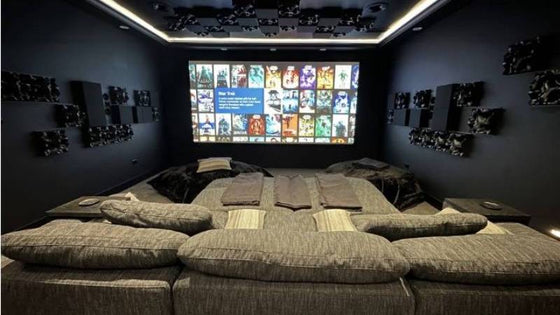Creating a system you love shouldn't be difficult. The Acoustic Frontiers blog is here to help.

This will be a quick article that explains how to interpret manufacturer published speaker dispersion specifications and in particular how these relate to what you might see on an off axis response plot.

The graphic above shows the frequency response for a wide dispersion cone/dome speaker. We've taken measurements at angles from 0 degrees (on axis) to 90 degrees (mic sideways on to the baffle). You can see that the SPL at different frequencies (the frequency response) changes shape as you measure at different off axis angles. It's pretty easy to read these charts for the purpose of examining speaker dispersion. You simply calculate the difference between the plots at two off axis angles. Many acoustic measurement tools have arithmetic functions that allow you to normalize data. You can then see how similar the on axis sound is to the off axis sound, and how much it is down at certain frequencies. For example the plot below shows the magnitude of the difference between the 45 degree off axis plot and the on axis plot. The on axis plot has been normalized to 0dB.

In this particular case you can see that the speaker has wide dispersion, and that the response on axis and 45 degrees off axis keep within a 3dB window through 6kHz or so.
Many pro-audio manufacturers publish dispersion specifications. These are commonly quoted as xx degrees. For example: "90 degrees". Correctly, these dispersion figures should be qualified by both the frequency and dB difference from the on axis SPL. For example: "90 degrees -3dB @ 1kHz". That would mean that at 1kHz the speaker covers an angle of 90 degrees with a nominal difference from the on axis SPL of 3dB. For what it's worth, the accepted pro-audio "standard" is to quote dispersion figures at -6dB and 1kHz. One important thing to understand is what the angular coverage refers to. This is a source of potential confusion for those reading and interpreting specifications.

A dispersion figure of 90 degrees means 45 degrees either side of "on axis". Likewise a dispersion figure of 80 degrees would mean 40 degrees either side of "on axis". So if you saw a published specification of 90 degrees with no frequency or dB qualifier, you'd assume this means that if you measured the speaker at 45 degrees off axis you'd see that at 1kHz the response is -6dB down. At Acoustic Frontiers we don't think this is a very useful standard for home theater design or acoustic design for two reasons. We think -3dB at 4kHz is a better specification for our purposes:
Learn how early home theater design, layout, and acoustic treatment improve performance in new home construction.
This media room was intentionally designed to feel like part of the home—not a separate, tech-heavy space. Through careful acoustic planning, equipment integration, and final calibration, we achieved a room that is both beautiful to live in and immersive to experience.
"No other subwoofer system I’ve owned even comes close to what this room delivers. Reaching out to Acoustic Frontiers was one of the best decisions I’ve made—I highly recommend working with them if you want to get the most out of your theater."

Nyal Mellor, Founder, Acoustic Frontiers



Nyal Mellor
Author